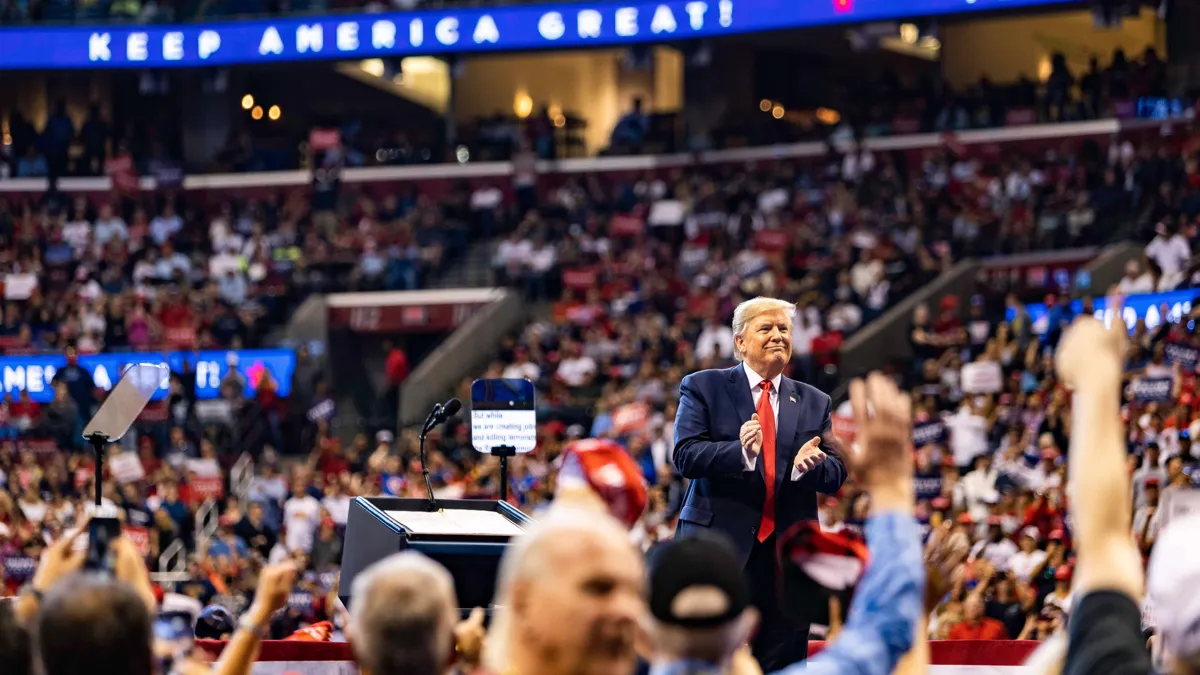Are Trump’s Criticisms of Fed Policy Based on Economic Conditions?
Central bankers generally use the «Taylor rule» to guide their policy decisions, raising rates when inflation is above target or the economy is growing too quickly, and lowering them when the opposite is true. Might Donald Trump have his own system for determining the optimal interest-rate level at a given time?

CAMBRIDGE — US President Donald Trump has lately been heaping abuse on Federal Reserve Chair Jerome Powell — not least over the supposedly mismanaged renovation of the Fed’s headquarters — and even drafted a letter sacking Powell, whose term runs until May 2026. In Trump’s view, Powell should force interest rates down by 300 basis points — or let someone else do it. Is there any logic behind Trump’s demands? To answer this question, it is revealing to look statistically at what determines whether Trump criticizes the Fed for interest rates that are too high versus too low.
The pressure Trump is putting on the Fed is fundamentally misguided. Perhaps the most important insight from the last half-century of monetary economics is that central banks under direct government control tend to abuse their power. Since political authorities cannot resist the temptation to stimulate the economy, putting them in charge of monetary policy results in an inflationary bias. And because everyone knows this ahead of time, monetary expansion merely validates inflation expectations, without boosting real growth.
A central bank that is shielded from political pressure can achieve better price stability and economic performance. For this reason, most major counties have given independence to their central banks. In the US, the Federal Reserve Act of 1913 prohibits the president from removing the central bank’s chair without cause. Even the Fed’s right to make its own arrangements regarding its headquarters building is protected. Most US administrations have scrupulously respected these rules, and the principle behind them.
In 1997, soon after my confirmation as a member of then-President Bill Clinton’s Council of Economic Advisers, I was asked in a televised interview how the administration viewed the policy stance of the Fed, then chaired by Alan Greenspan. «We don’t comment on the Fed, ” I replied, «because we have confidence that it will do a good job.» My response missed the mark, a superior later advised me: though I had started strong, I should have omitted that second clause. After all, I would not want to get caught out in some future interview, with an interlocutor who asked me to express the same explicit confidence in the Fed’s performance — and would interpret anything less as skepticism. From then on, when asked about monetary policy, I said simply, «We don’t comment on the Fed.»
Even Richard Nixon, who did pressure the Fed chair to loosen monetary policy (with disastrous results), at least had the sense not to do it publicly. The same cannot be said for Trump, who insists that he could remove Powell, despite the Supreme Court’s recent decision reaffirming protections for Fed officials.
Trump has no doubt that he understands monetary policy better than Fed policymakers — «certainly much better» than Powell. Supporters reason that this might be true, because he was a successful businessman. Might they have a point? Could Trump be a better judge of the appropriate interest rate, using his experience and wisdom to judge when inflation is too high or unemployment too low?
Central bankers generally use the «Taylor rule» to guide their policy decisions, raising rates when inflation is above target or the economy is growing too quickly to maintain price stability, and lowering them to mitigate the risk of deflation and economic stagnation. Is there a «Trump rule» for determining the optimal interest-rate level at a given time, based on inflation and unemployment? Or, alternatively, does Trump believe that interest rates are always too high, perhaps because of his background in real estate?
Between January 2013 and June 2025, Trump criticized Fed policy — particularly on social-media platforms — on at least 145 occasions. On 129 of those occasions, he complained that interest rates were too high. In 16 instances, he complained that they were too low.
Sohaib Nasim and I used a technique called Firth’s penalized logistic regression, along with simple ordinary least squares (OLS) regression, to uncover what guides Trump’s public calls for looser money. We included as possible determinants: the unemployment rate, the consumer-price-index inflation rate, and the contemporaneous level of the Fed funds rate. In addition, a dummy variable, «In-Office, ” indicates Trump’s terms as president — defined to include also the transition period following an election victory — to test whether his critiques are politically motivated or self-interested.
In the linear probability OLS model, In-Office is highly significant (>99.9%). So is the coefficient on the interest rate. The inflation term is marginally significant (94.9%). The Firth model shows similar results. But now they suggest that the only statistically significant predictor of Trump’s critiques is whether he is in the White House: the coefficient on the In-Office dummy is again large, and highly significant statistically (99.8%). Meanwhile the macroeconomic variables — the Fed funds rate, unemployment, and inflation — are all statistically insignificant.
Ultimately, the effects of these three macroeconomic variables on Trump’s position are negligible. The only variable that really matters is whether Trump is in power: it explains 76% of the variation in Trump’s critiques of Fed policy. Incorporating the three macro variables does not visibly alter this result. Put simply, whenever Trump is in power, he calls for easier money. (On the few occasions when Trump championed lower interest rates while not in office, the critiques amounted essentially to declarations that if he were president, he would reduce inflation, thereby allowing for lower interest rates.)
In Trump’s world, there is no Taylor rule or anything like it; there is just the demand for lower rates when he thinks it will benefit him. Central-bank independence never looked so good.


